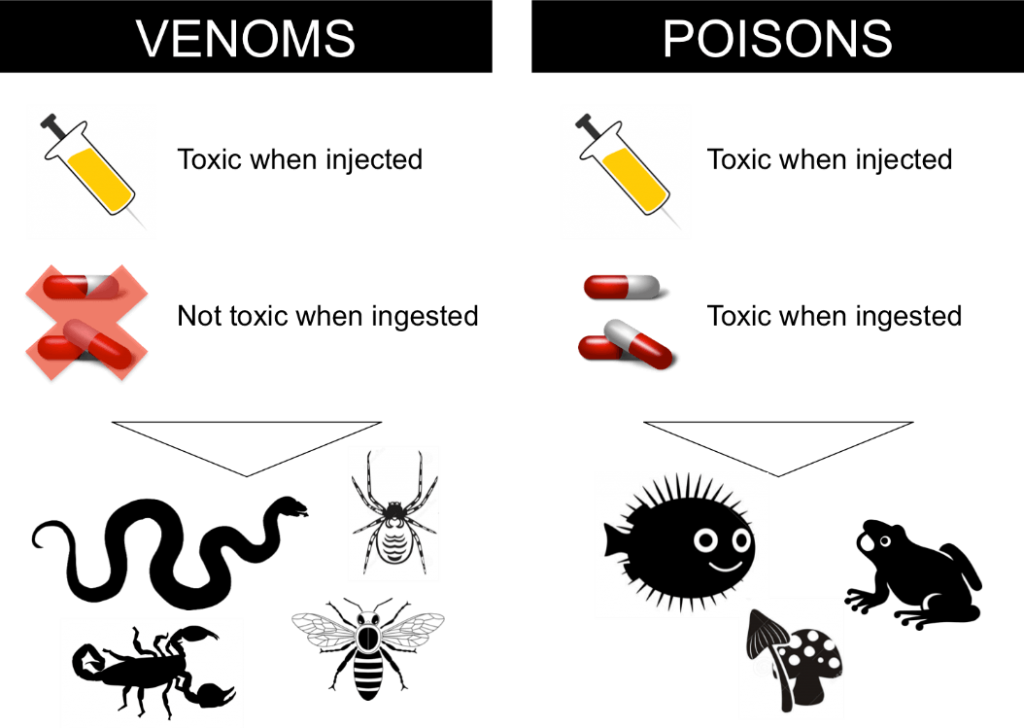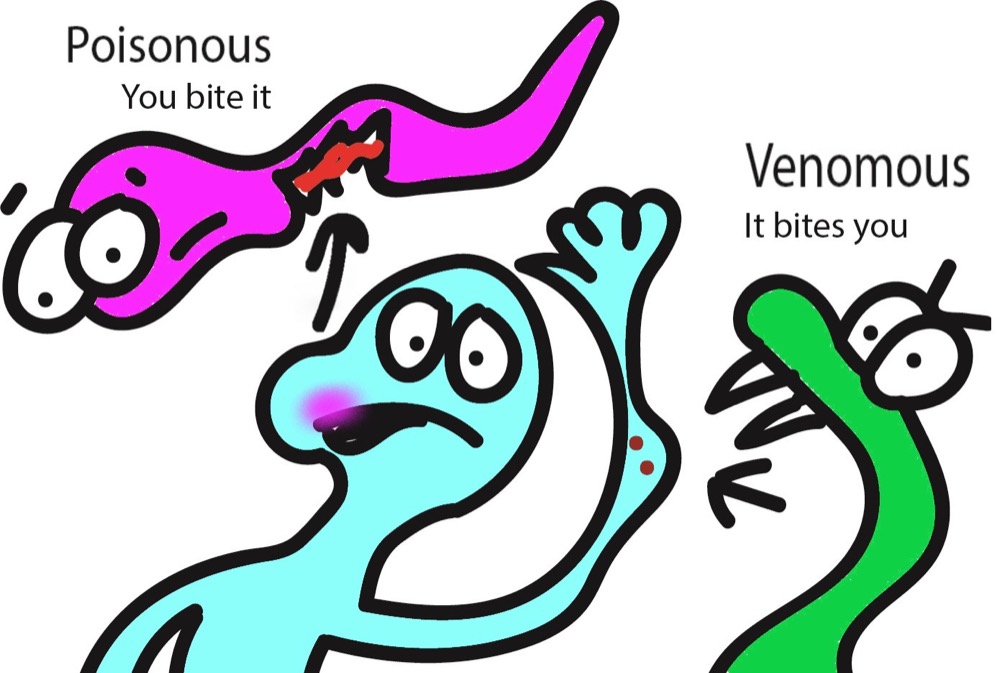Many people think that venom and poison are the same, but in reality, they are two different things. Both venom and poison can be harmful to humans and animals, but they work in different ways. In this article, we will discuss the differences between venom and poison.
What is Venom?

Venom is a specialized type of secretion that is produced by certain animals such as snakes, spiders, scorpions, and some fish. Venom is usually injected into the victim's body through a bite or sting. It contains a mixture of proteins and enzymes that can cause various effects on the victim's body, including pain, paralysis, and even death.
One of the unique features of venom is that it is actively delivered by the animal that produces it. This means that the animal has control over when and how much venom is injected into the victim.
What is Poison?

Poison, on the other hand, is a substance that can be harmful when ingested, inhaled, or absorbed through the skin. Poison can be found in various sources such as plants, chemicals, and even some animals. Unlike venom, poison is not actively delivered by the source but rather it is passively ingested or absorbed by the victim.
Poison can cause a wide range of effects on the victim's body, including nausea, vomiting, convulsions, and even death in severe cases.
How Do Venom and Poison Differ?
The main difference between venom and poison is the way they are delivered to the victim's body. Venom is actively delivered by the animal that produces it, while poison is passively ingested or absorbed by the victim.
In addition to the delivery method, venom and poison also differ in their effects on the victim's body. Venom is usually more potent than poison and can cause immediate and severe effects on the victim's body, while poison may take longer to take effect and may cause less severe symptoms.
Another difference between venom and poison is the way they are used by the animal that produces them. Venom is typically used by animals for defense or to subdue prey, while poison is used as a means of protection against predators or to attract prey.
Examples of Venomous and Poisonous Animals and Plants

Some examples of venomous animals include snakes, spiders, scorpions, and some fish. These animals use their venom to subdue prey or defend themselves against predators.
Some examples of poisonous plants include poison ivy, poison oak, and poison sumac. These plants can cause skin irritation or severe allergic reactions when touched or ingested.
Conclusion
In summary, venom and poison are two different things. Venom is actively delivered by the animal that produces it and can cause immediate and severe effects on the victim's body. Poison, on the other hand, is passively ingested or absorbed and may cause less severe symptoms. Understanding the differences between venom and poison can help you stay safe in the presence of venomous or poisonous animals and plants.